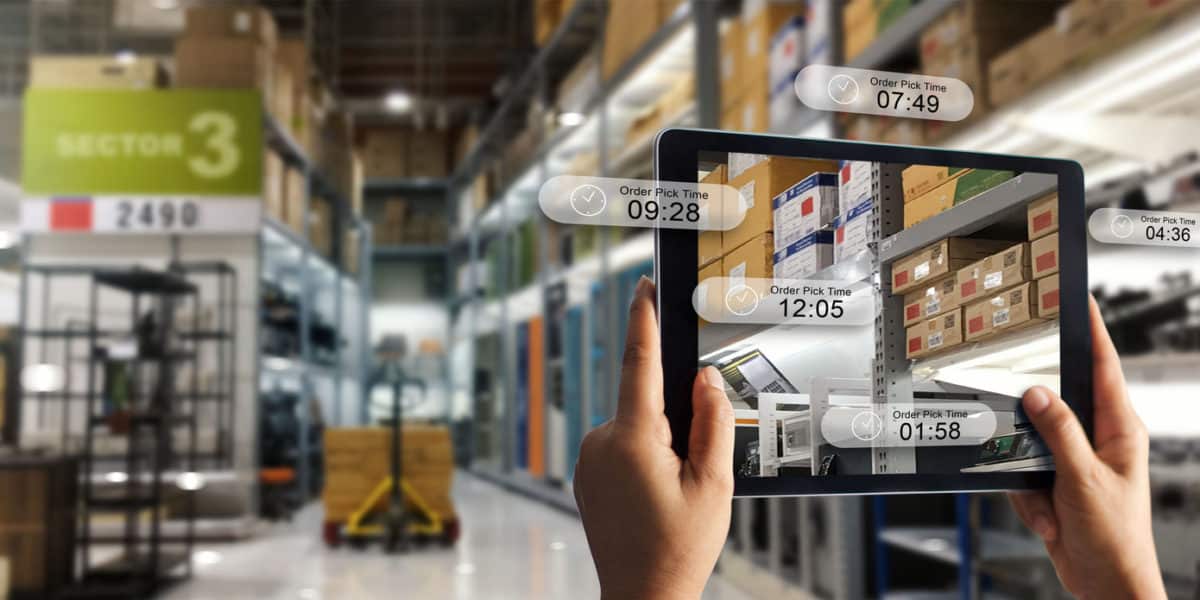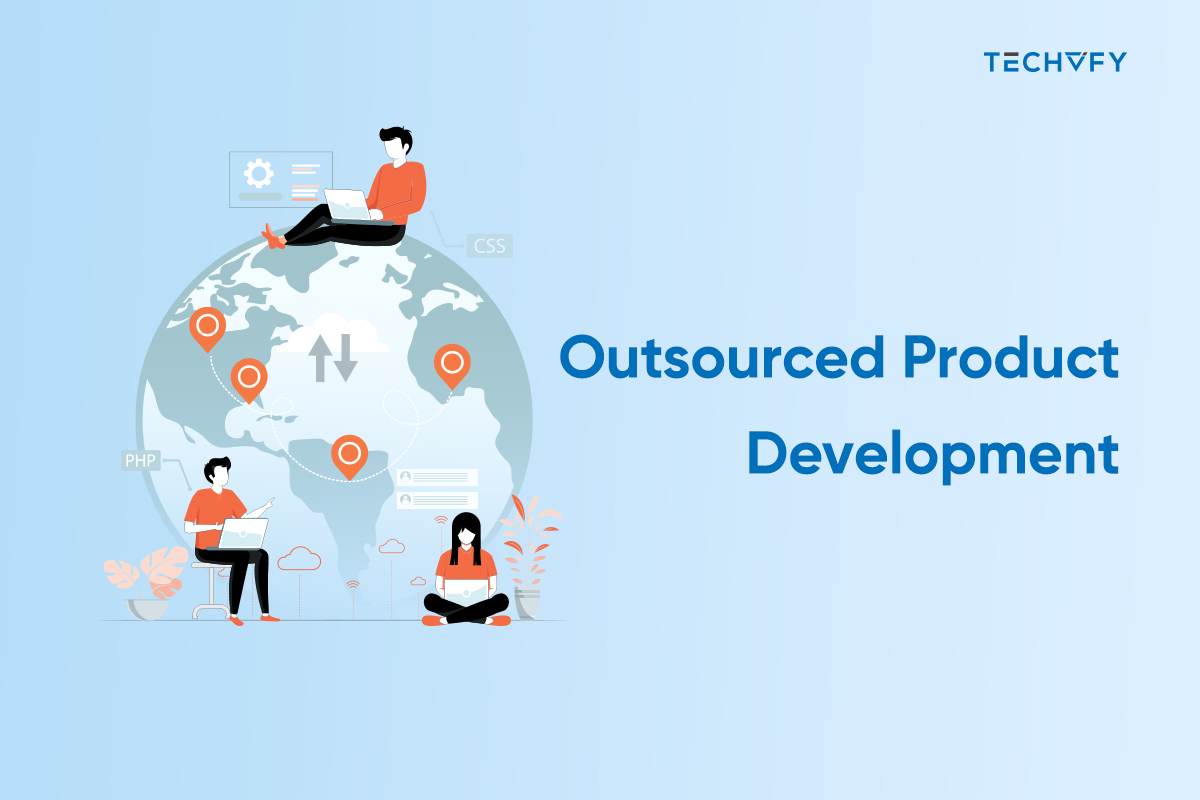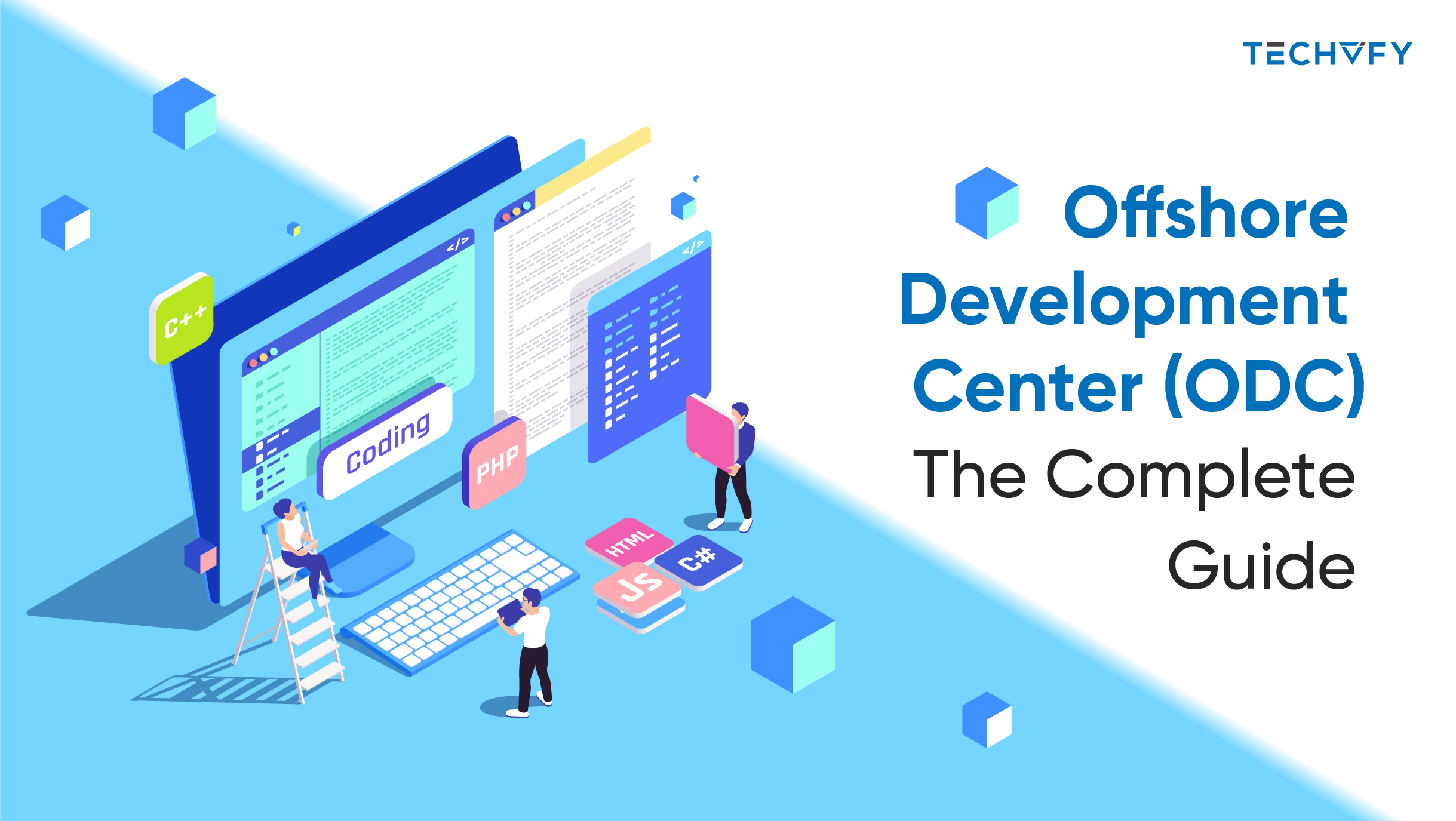Digital Transformation in Transportation & Logistics: Impact and Examples
- TECHVIFY Team
- 0 Comments
Businesses worldwide are rapidly adopting digital solutions due to data breach scandals, increased data security regulations, and the spread of AI. The competition is becoming fierce in almost every niche.
Surprisingly, digital transformation in logistics has only recently started to gain momentum. Historically an innovative industry, logistics is now lagging. Many logistics companies are hesitant to change and continue using traditional methods. But the shift is already happening.
In this article, we will share our insights on why digital transformation in transportation and logistics is urgent, the benefits it offers, and how to implement it correctly.
Understanding Digital Transformation in Logistics and Transportation
Digital transformation in logistics involves adopting innovative technologies to improve operations. This change helps you meet rising expectations and market demands, positioning your company for long-term success.
However, 72% of logistics company leaders note a lack of awareness about digitization in the industry and the need for a clear technology roadmap.
Key elements include automating processes and using data analytics. Adopting new technology improves workforce productivity and customer service. It also sets your logistics and transportation organization apart from competitors.
Different types of Transportation Development
1. Shifting Organizational Mindset
The most important part of the transformation process is changing the internal mindset. Organizational transformation, sometimes called cultural transformation, is exactly that.
To successfully carry out digital transformation in your logistics company and successfully implement digital solutions externally, it’s crucial to first get your workforce on board and integrate these solutions internally.
Changing the entire way you operate may take time and effort. However, gaining the support and comprehension of your employees will greatly enhance the chances of success, and the transformation process will go much more smoothly.
2. Transforming the Business Model
You need business model transformation when you aim to do more than implement a few digital solutions and plan a complete transformation of your logistics business. This involves major changes in how you deliver value to customers and partners, including changes in communications.
3. Expanding into New Domains
Consider how Amazon evolved from an online bookstore to its current form or how Netflix shifted its operations when streaming was emerging. This is domain transformation—making changes to expand into related niches and grow across domains. This approach helps your business grow now and lays the foundation for future growth opportunities.
One more step in the digital transformation, check out our articles:
Digital Transformation Framework – Your Definitive Guide For 2025
The Impact of Digital Transformation on Transportation and Logistics
Digital transformation is excitingly reshaping the digital transformation transportation and logistics industry, boosting efficiency, cutting costs, and improving service quality. Here’s how:
- Boosted Operational Efficiency: Digital tools and automation streamline logistics and transportation processes. Automated warehouses, for instance, use robotics and AI to handle inventory, reducing human error and speeding up operations.
- Enhanced Data Analytics: With big data and advanced analytics, companies can process vast amounts of information to make better decisions. Predictive analytics helps forecast demand, optimize routes, and manage risks more effectively.
- Real-Time Tracking and Visibility: IoT devices and GPS tracking provide real-time visibility into shipments’ location and status. This transparency helps companies monitor their supply chain closely, improving delivery times and customer satisfaction.
- Better Customer Experience: Digital platforms enable seamless communication with customers. From real-time tracking updates to automated customer service chatbots, customers receive timely information and support, enhancing their overall experience.
- Cost Reduction: Automation and optimization tools help reduce operational costs. For example, route optimization software minimizes fuel consumption and labor costs by finding the most efficient delivery routes.
- Enhanced Security: Digital transformation brings advanced security measures like blockchain technology, ensuring data integrity and security across the supply chain. This reduces fraud risk and builds trust among stakeholders.
- Sustainable Practices: Digital tools help logistics companies adopt more sustainable practices. Route optimization not only saves costs but also cuts carbon emissions. Data analytics can also pinpoint areas for reducing energy consumption.
- Flexibility and Scalability: Digital solutions offer greater flexibility and scalability. Cloud-based systems allow companies to scale operations up or down based on demand without major investments in physical infrastructure.
- Integration and Collaboration: Digital platforms facilitate better integration and collaboration across the supply chain. Partners can share information more easily, leading to improved coordination and efficiency.
- Innovation and Competitive Advantage: Adopting digital technologies fosters innovation. Companies that leverage the latest technology can develop new business models and services, gaining a competitive edge.
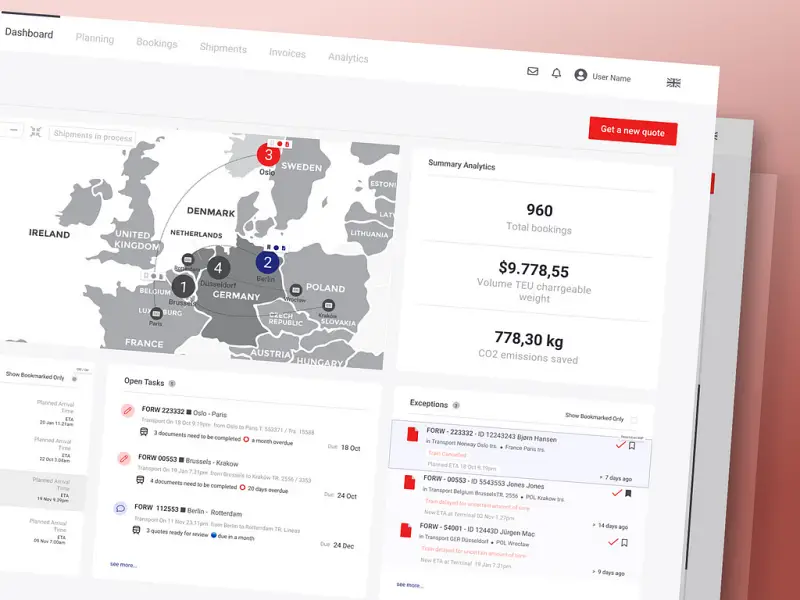
In summary, digital transformation is a game-changer for transportation and logistics, offering numerous benefits that boost efficiency, reduce costs, and enhance service quality. Embracing these technologies helps companies stay ahead and meet the market’s evolving demands.
Challenges with Outdated Infrastructures
Outdated systems and technologies are a barrier. Existing logistics and transportation infrastructure often lack the flexibility to meet new digital requirements. Integrating modern solutions with legacy platforms is difficult.
However, organizations recognize the need for change. 67% of shipping and logistics companies have a formal digital transformation strategy, while 31% are considering or evaluating such a plan.
1. Addressing Resistance to Change
Data from the U.S. Bureau of Labor Statistics shows that 47% of jobs are at risk of automation between 2010 and 2030. Many employees fear this change. Engaging your team throughout the process can build understanding and enthusiasm for positive change.
To overcome resistance, logistics, and transportation must prioritize effective change management strategies. Facilitate a smooth transition, involve those most impacted, and communicate the reasons for the change. Share the benefits of digitalization to gain stakeholder buy-in and alignment.
2. Overcoming Resistance to Change
According to the U.S. Bureau of Labor Statistics, 47% of jobs could be automated between 2010 and 2030. Many employees are worried about this, but involving your team in the process can build understanding and support for positive change.
The logistics and transportation sectors should concentrate on robust change management strategies to overcome resistance to change. These strategies should ensure a smooth transition, involve those most affected, and clearly explain the reasons for the changes. Sharing the benefits of digitalization helps to gain stakeholder support and alignment.
3. Upskilling Employees
Digital transformation requires digital proficiency. Comprehensive training programs are needed to upskill your workforce on new tools and digital capabilities. New hires also benefit from upskilling, as 44% of new hires need updated skills to fulfill their roles. Providing the right support ensures employees can confidently use technologies for maximum impact.
Digital Transformation in Transportation and Logistics Examples
1. Predictive Analytics and Big Data
Operations such as predicting demand and managing inventory are often difficult. Predictive analytics, which uses big data, offers a solution. Sophisticated algorithms analyze large datasets to identify patterns and trends.
A data-driven approach allows you to forecast demand and adjust inventory levels accurately. Logistics and transportation organizations can optimize stock based on predicted customer needs. Predictive maintenance models can also identify potential failures before they occur.
2. Telematics and IoT
Lack of visibility affects asset monitoring and shipment tracking. IoT-enabled telematics addresses this issue with real-time sensor data and connectivity.
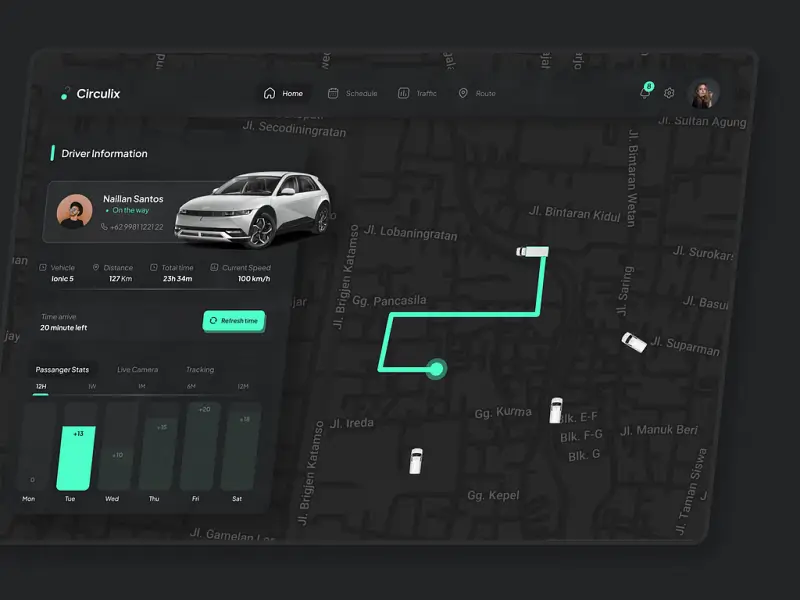
For instance, GPS and RFID tags show shipment locations and conditions. You can also optimize routes and improve asset utilization with these data streams. These features enhance operations at every point in the logistics process.
3. Managing Fleets with Software
For transportation companies, efficient fleet operations are crucial. Digital fleet management software centralizes and automates key tasks. For example, smart scheduling aids in planning and reduces risks for drivers.
4. Improving Supply Chains with Software
Many supply chains struggle with fragmented data, manual processes, and disconnected systems. Cloud-based SCM software provides a unified platform to transform this disarray into organized efficiency.
You gain full visibility into inventory levels, order tracking, warehouse management, and more. Suppliers, partners, and customers can collaborate smoothly by accessing the same information. This keeps every stakeholder aligned for quick decision-making.
5. Improving Flexibility with Cloud Computing
On-premise data centers and legacy IT limit flexibility. Cloud computing removes these limits by offering flexibility, remote access, and security. These are some of the reasons why cloud computing is seen as the most impactful technology for digital transformation in shipping and logistics firms.
Conclusion
Digital transformation in logistics and transportation is essential to meeting market demands and improving efficiency. Many industry leaders lack awareness and a clear technology roadmap despite the benefits. Key steps include automating processes, leveraging data analytics, and fostering organizational change.
Adopting these technologies boosts productivity, enhances customer service, and provides a competitive edge. Success hinges on internal adoption and employee engagement.
Ready to revolutionize your logistics operations? Contact TECHVIFY now for expert consultation and top-tier services to drive your digital transformation.
Contact TECHVIFY Today!
TECHVIFY – Global AI & Software Solutions Company
For MVPs and Market Leaders: TECHVIFY prioritizes results, not just deliverables. Reduce time to market & see ROI early with high-performing Teams & Software Solutions.
- Email: [email protected]
- Phone: (+84)24.77762.666




